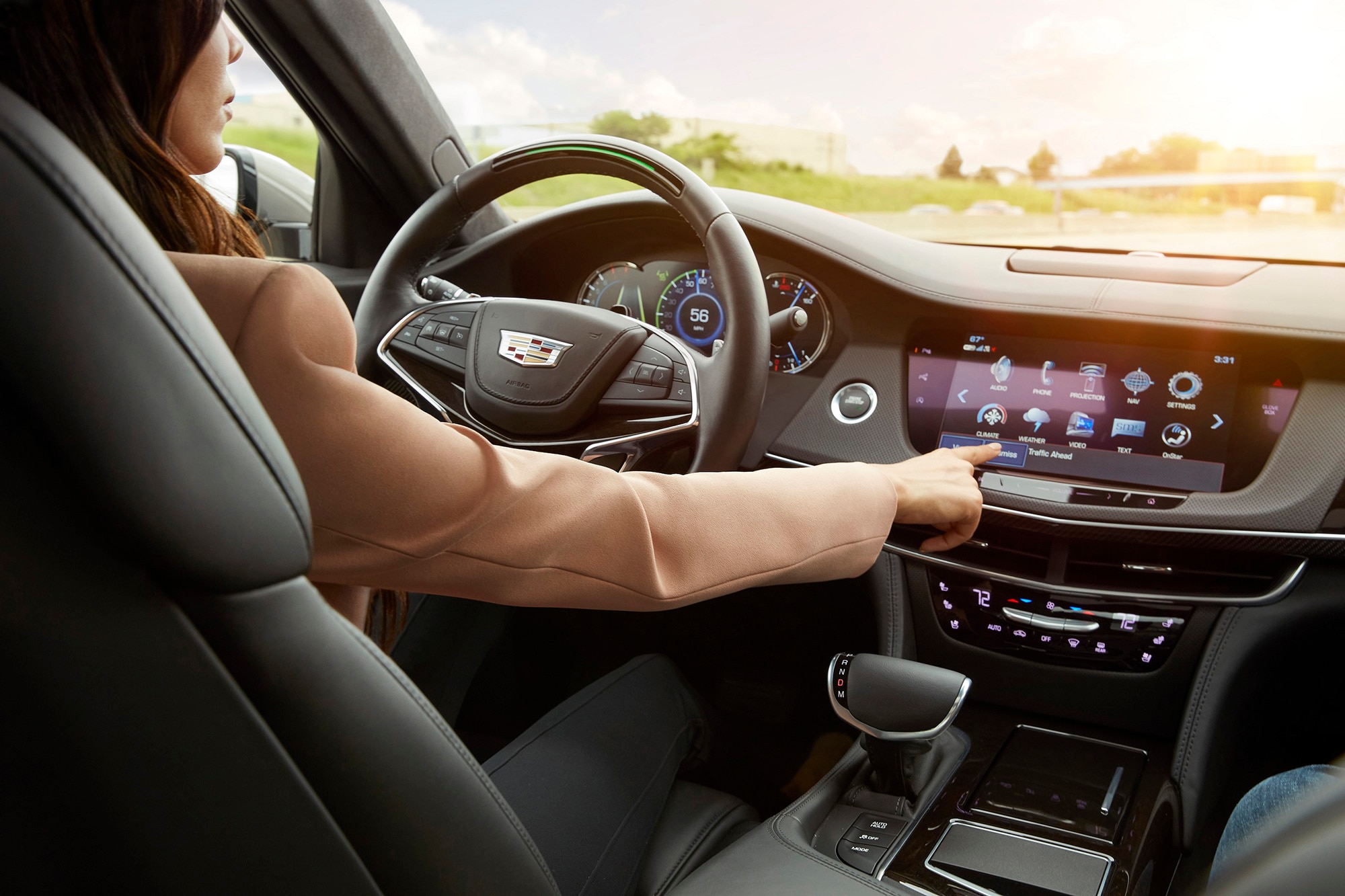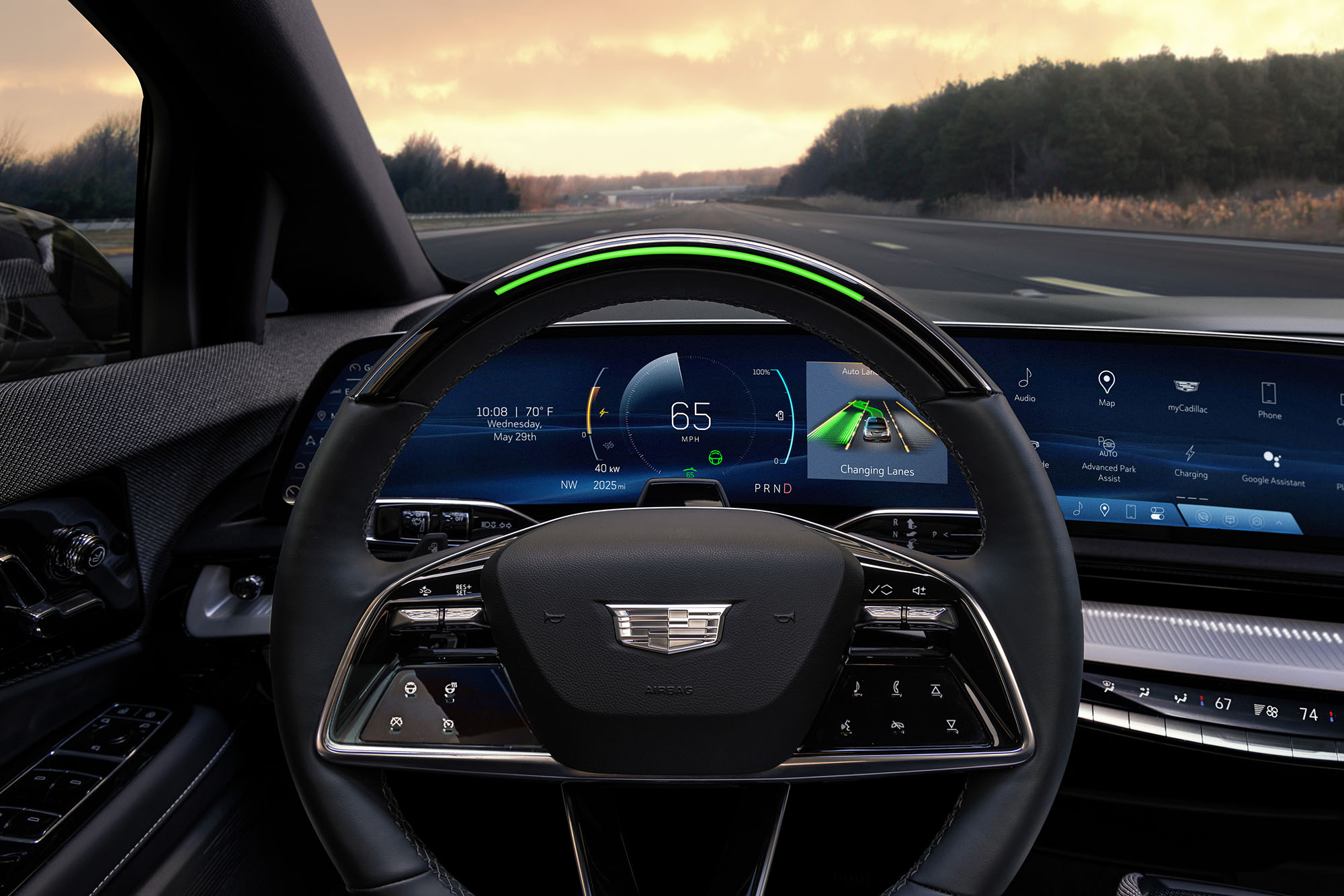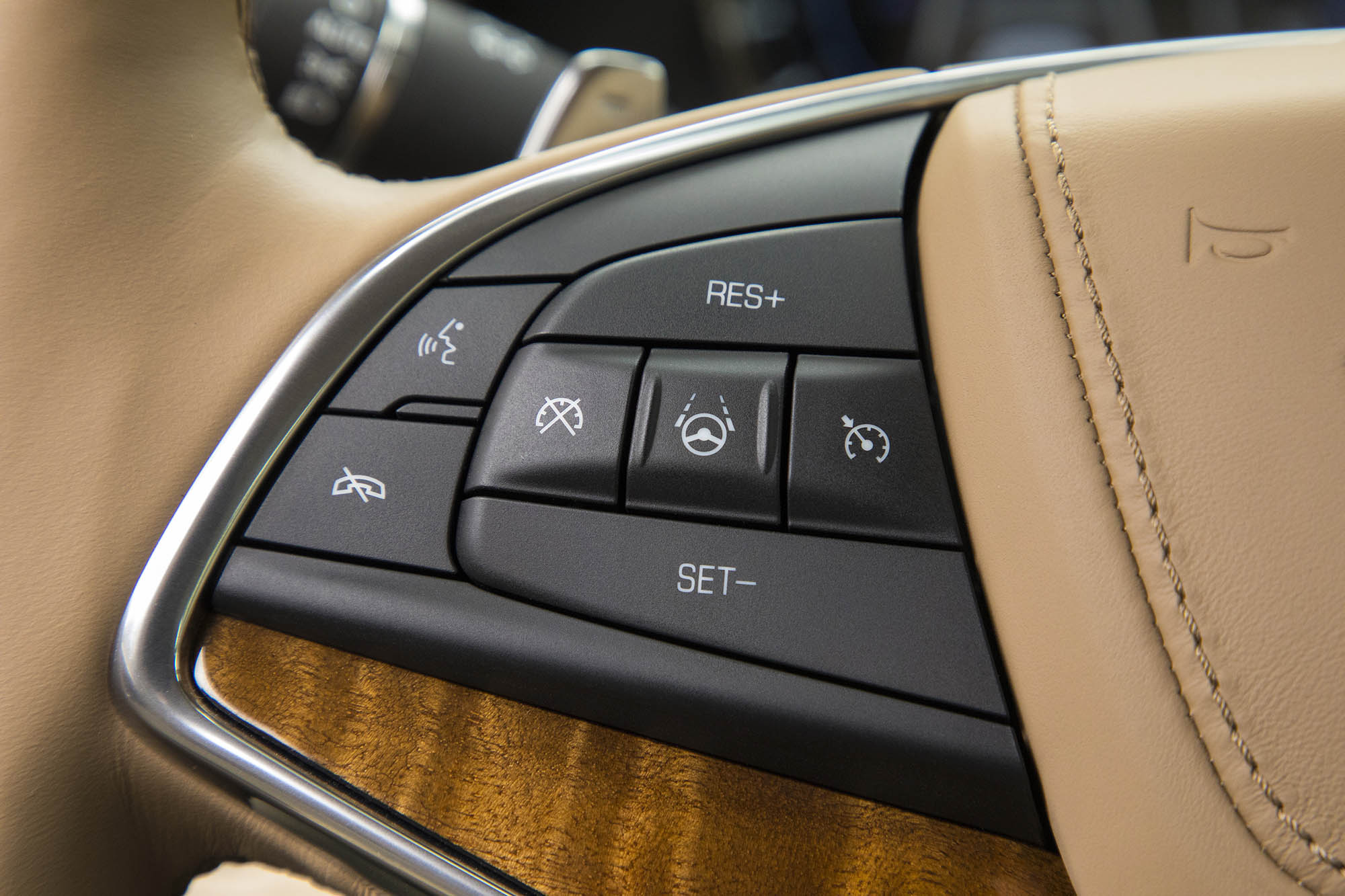5 Ways Cars Are Helping Us Be Better Drivers
Many drivers could use an extra set of eyes to help prevent crashes and injuries — that's where technology comes in.
 Cadillac
Cadillac
Even the most experienced drivers need a little help sometimes. Fortunately, many modern vehicles have advanced driver-assistance systems (ADAS) that can act as an extra set of eyes. Here are five ways in-car technology can aid us in being better drivers.
 Cadillac
Cadillac
Alerts Help Keep You in Your Lane
While some states have laws to discourage extended stays in the left lane, it's generally frowned upon even outside those states. It might be tempting to scoot over into the open left lane to make better time on your next road trip, but that lane is often considered a passing-only space.
Some automakers, such as Nissan with its ProPilot 2.1 software, equip left-lane alerts to let drivers know when they've stayed too long in the passing lane. Other systems, such as General Motors' Super Cruise hands-free setup, automatically return to the correct lane after completing a pass or other maneuver.
Newer Cars Often Have Cross-Traffic Alerts
Many newer vehicles — including those from Honda, Volvo, Mazda, Volkswagen, and more — come with a front-cross-traffic-alert feature, which uses radar to detect vehicles that may soon enter your path. Depending on the particulars of your car's system, your vehicle may give you a visual, audible, or haptic warning (or all three) when a car or bicycle enters the road where you're about to go.
There are systems that add active braking if you don't heed the warning, slowing or stopping your vehicle to minimize or avoid a possible impact. The tech can be of particular benefit to people who drive in heavily wooded areas or neighborhoods with limited visibility.
 Cadillac
Cadillac
Adaptive Cruise Control Helps You Maintain Distance
We can all get impatient, which can be a recipe for disaster at highway speeds. Adaptive cruise control is designed to help keep you out of trouble in those times.
It often uses sensors, radar, and cameras to determine the speed of surrounding traffic and automatically adjusts your vehicle's speed to match and maintain a safe distance. In addition to helping avoid unintended tailgating, many adaptive cruise control systems can detect sudden shifts in traffic behavior and sound an alert.
Some work with lane-keeping assist and other ADAS functions to provide semi-autonomous highway driving functionality, but the driver must remain attentive and ready to take control at any time.
Some Vehicles Have Traffic-Ahead Alerts
It can be easy to let your guard down while sitting at a red light or in a drive-through lane, but that lapse in attention may mean that you miss essential movements around your vehicle, such as when the car in front of you pulls away.
Subaru, Hyundai, and others offer a system that sounds an alarm and gives a visual warning in the instrument panel if the vehicle in front of yours takes off and you don't react in a short time — several seconds, in Subaru's case.
Automatic Emergency Braking Can Help Prevent Collisions
Automatic emergency braking (AEB), which is meant to identify a potential collision ahead and mitigate it, might be one of the most effective advanced driver aids today. Recent research from insurer AAA showed that vehicles equipped with AEB avoided 100% of forward collisions at speeds of up to 35 mph. AEB typically uses tech such as radar, camera, or lidar to determine what's around your vehicle.
Written by humans.
Edited by humans.
 Chris Teague
Chris TeagueAfter working in the technology and software industry for several years, Chris Teague began writing as a way to help people outside of that world understand the sometimes very technical work that goes on behind the scenes. With a lifelong love of all things automotive, he turned his attention to breaking news, writing new vehicle reviews, and detailing industry trends.
Related articles
View more related articles